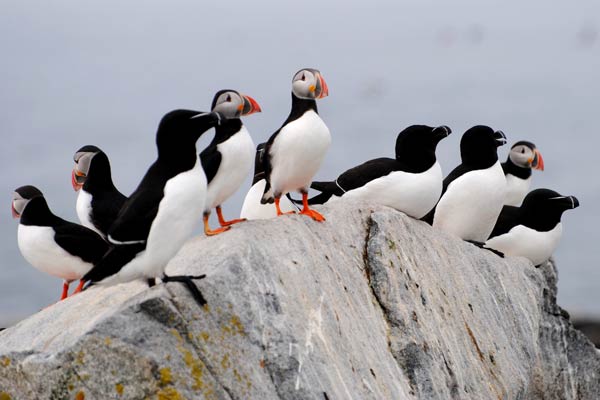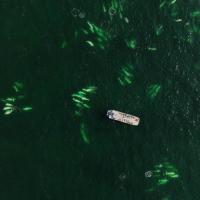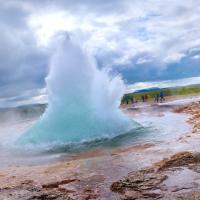The Holbrook Explorer

Photo Gallery: Wildlife of the Far North
Photo Gallery: Wildlife of the Far North
What our planet’s northernmost latitudes lack in biodiversity, they make up for in charismatic fauna. From polar bears to large cervids like moose and reindeer to marine mammals like narwhals and walruses, the Arctic and Subarctic beckon with species uniquely adapted to the region's extreme temperatures and landscapes.
Here's just a glimpse of the intriguing wildlife found at the top of the world (including in some of our favorite destinations, like Alaska, Canada, Iceland, and the Svalbard archipelago).
Bears
Polar bears are arguably the most iconic species for this region and can be found throughout the circumpolar Arctic. At these latitudes, it's also possible to find the brown bear (which includes subspecies like the grizzly and the Kodiak), and in North America, the black bear.
 Polar bear
Polar bear
 Brown bears in Alaska by Debbie Jordan
Brown bears in Alaska by Debbie Jordan
Cervids
Moose, reindeer (more commonly called caribou in the U.S.), elk, and deer all belong to the group of animals known as cervids. Interestingly, the Svalbard archipelago in Norway is home to a small subspecies of reindeer found nowhere else.
 Moose by Jerry Goffe, NaturePhotoWorks.com
Moose by Jerry Goffe, NaturePhotoWorks.com
 Svalbard reindeer
Svalbard reindeer
Pinnipeds
Pinnipeds include fin-footed marine mammals like seals and sea lions. They tend to prefer cold water, and depending on where you go, it's possible to see species like the walrus, harbor seal, bearded seal, and ringed seal, among others.
 Walruses by Andrew Trites, NOAA
Walruses by Andrew Trites, NOAA
 Harbor seals
Harbor seals
Whales
Of the 17 or so whale and porpoise species that have been recorded in the Arctic and Subarctic, most, like the humpback, minke, and gray whale, are migratory. Exceptions include the beluga, bowhead whale, and the shy and unusual narwhal, the "unicorn of the sea"—all of which live in Arctic waters year-round.
 Narwhals by Glenn Williams
Narwhals by Glenn Williams
 Humpback whale breaching
Humpback whale breaching
Birds
Though you won't find any penguins near the North Pole, you can expect to view a variety of other birds, often congregating in great numbers. Seabirds and waterfowl like gulls, terns, ducks, geese, auks, skuas, and loons are common, as are birds of prey like owls and eagles. Puffins, of course, are a particular draw for many travelers.
 Atlantic Puffins and Razorbills
Atlantic Puffins and Razorbills
 Red-throated Loon by Helgi Gudmundsson
Red-throated Loon by Helgi Gudmundsson
Small carnivores
The Arctic fox is common across the Arctic tundra—its range includes the northern reaches of North America, Europe, and Asia—and in fact, it is the only land mammal native to Iceland. Thanks to their dense fur, certain members of the weasel family also thrive in colder temperatures, such as sea otters, wolverines, and minks, as do other carnivores like wolves, lynx, and the red fox.
 Arctic fox by Algkalv
Arctic fox by Algkalv
 Sea otter by Debbie Jordan
Sea otter by Debbie Jordan
Domestic or introduced animals
Some animals, though not native to a particular region, have become so established in the local landscape or culture that they're worth noting. For example, the Icelandic horse, descended from ponies first brought by Norse settlers in the 9th and 10th centuries, is prevalent throughout the country today.
 Icelandic sheep by Tammara Williams
Icelandic sheep by Tammara Williams
 Icelandic horse by Andreas Tille - Own work, CC BY-SA 3.0
Icelandic horse by Andreas Tille - Own work, CC BY-SA 3.0




